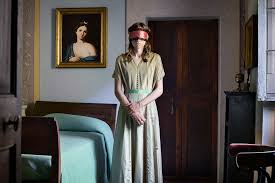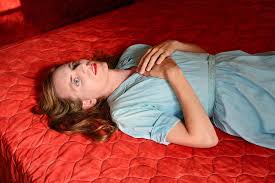Claude Cahun was a french photographer whose work was both personal and political and often undermined traditional concepts of static gender roles. The majority of her photographs were self portraits which helped Claude Cahun develop her ideas of masculinity as well as femininity, and how she felt that it depends on the situation. She believed that Neuter is the only gender that always suited Claude Cahun, meaning that she did not believe in specific genders.
Originally her name was Lucy Schwob however she decided she would rather be called Claude Cahun as the name is more gender neutral. In French the name Claude could either refer to a man or woman which she was ambitious about. Additionally she also took her surname from her grandmother Mathilda Cahun.
In 1937 Claude Cahun moved to jersey along with her stepsister and lover Marcel Moore. They were imprisoned for activities in the resistance during the occupation, and decided to stay in jersey after the world war.
Lissa Rivera’s is a fine art photographer based in New York City who released a series of photographs called ‘Beautiful Boy’.
This involved the same male featuring in a variety of photos. This series shows the male dressed up in female clothes; this attire implies that the clothes and accessories do not define the identity of a person. The flowy garments assign a female label to them, with skirts and dresses being the main focus on what gender you are.
Lissa Rivera’s found that while taking her first photographs of her series ‘beautiful boy’ she found it very emotional as she could clearly tell how vulnerable her model was; who eventually became her romantic partner. Furthermore the model and Lissa Rivera’s began taking photos every weekend to continue her series, which lead to her winning the magnum photography award for several of her pictures in 2017.
She felt that it was of importance to show his femininity as a strength rather than a weakness, which helps the message across that the clothes you wear do not identify who you are as a person.
Image Analysis

Claude Cahun’s Photography 
Lissa Rivera’s Photography
Claude Cahun used black and white tones in his photograph which creates a dark environment adding several tones as well as depth. Additionally the background of her photos appear to be simple and empty, which creates more tension and focus to the model.
Lissa Rivera’s photograph is very different in comparison to Claude Cahun’s work as she has chosen to use colour within her photographs creating them to become eye catching and empowering. The way in which she has chosen to use feminine clothes and accessories on the model creates the idea that femininity shouldn’t be seen as a weakness and should be seen as a strength. Furthermore the background of her photographs are busy which may take the focus of the model itself.
A similarity which both artist have taken into account is the way in which both of the models faces are disguised in certain ways as, Claude Cahun has used a cut-out of someone’s chin and asked the model to place it other hers which helps the idea of identity as it hides the models face. Lissa Rivera’s used a similar idea of disguising a section of the models face with a blindfold covering the eyes hiding a key feature of the models face, which impacts the way you view the photograph.
However the artists also have multiple differences in these two photos in particular as Claude Cahun’s photography was taken in the 1900s where as Lissa Rivera’s photography was taken in more recent years, therefore you can see a clear difference in where technology has adapted to have better quality photographs. Additionally Claude Cahun has chosen to take his photos in black and white creating harsh and dark tones whereas Lissa Rivera’s has chosen to use colour. However they both equally have a different selections of details in several ways.






